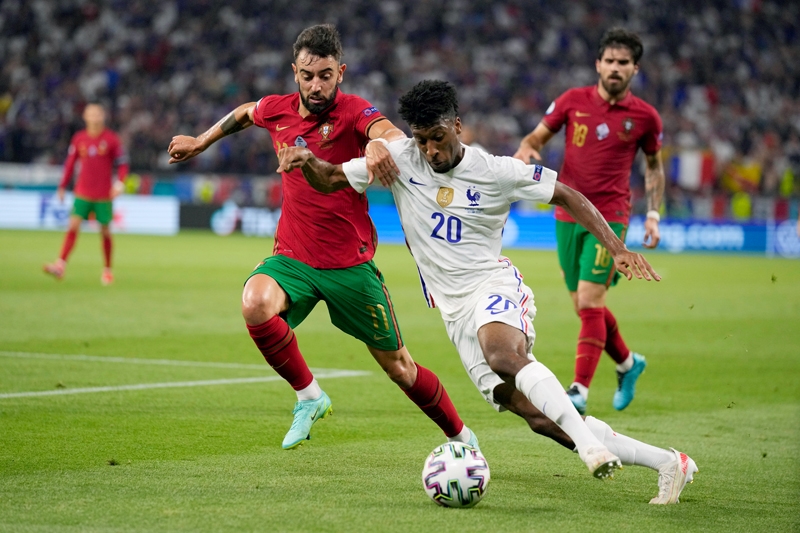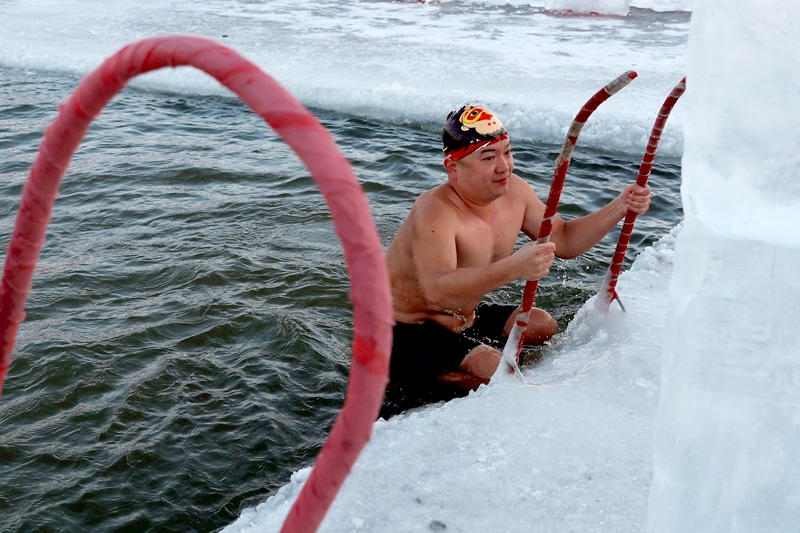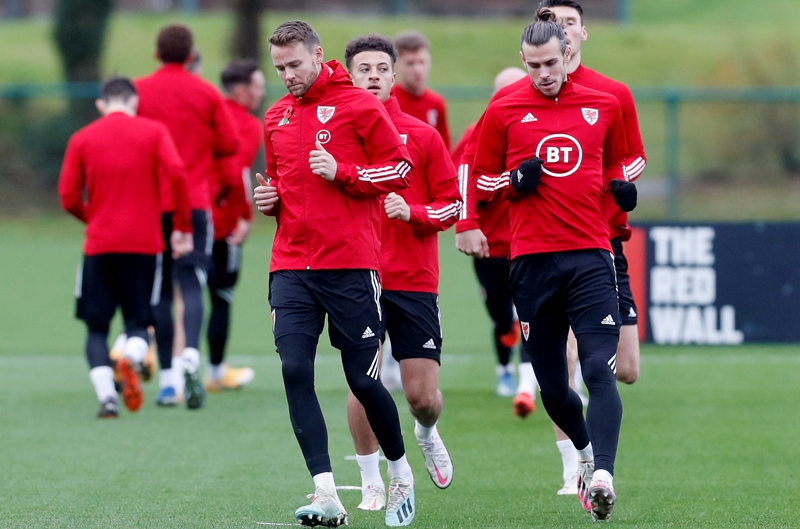You are viewing 1 of your 1 free articles. For unlimited access take a risk-free trial
Fixture congestion in sport: what’s the damage?

Muscle damage monitoring could be an effective way to ensure players keep fresh during fixture congestion periods. SPB explains
Once upon a time, playing more than one match per week was the exception rather than the norm for most professional soccer players. However, the increasingly commercialized nature of the sport and the subsequent manipulation of match scheduling in favour of TV revenue means that players regularly play two matches per week, and at some points in the season as many as three(1,2). In addition, the ‘catch-up’ phase following the cancelled matches due to the covid-19 pandemic has heaped additional pressure on players.Common sense tells us that when recovery from a match in insufficient or sub-optimal, subsequent performance will likely be impacted. This is true even when the very best recovery nutrition strategies are deployed (see this article for an in-depth discussion on recovery nutrition). However, it’s not just performance that’s affected; fixture congestion and sub-optimal recovery also appears to increase the risk of injury(3). Indeed, recent evidence has emerged that the congested weeks after the COVID-19 lockdown increased the number of injuries, with the injury rate per game being 0.84 after lockdown, compared to 0.27 prior to the COVID-19 pandemic(4). Add in the fact that even a recovery period of 72 hours following a match may not be long enough for sufficient recovery to occur, and the challenges that soccer (and other team sport) players face becomes clear!
Muscle damage and recovery
During vigorous physical exercise, damage in the form of micro-tears occurs in the exercising muscles. In severe cases of unusually intense, prolonged or unaccustomed exercise, the magnitude of this damage may be large enough to cause post-exercise soreness – known as delayed onset muscle soreness (DOMS). However, even where no DOMS is present, significant amounts of muscle damage typically results in feelings of fatigue, ‘leaden’ muscles and general lack of ‘zing’. Monitoring muscle damage following exercise and how it resolves over time is therefore a very useful tool for assessing physiological recovery (along with subjective feelings and performance measures).One of the best ways of assessing muscle damage is by monitoring blood levels of a naturally occurring protein called ‘creatine kinase’ (CK). CK is an enzyme that plays a role in energy production. Higher amounts of this enzyme are found in tissues that use a lot of energy, such as the skeletal muscles and those in the heart. Crucially, CK leaks into the blood when these tissues are damaged, which is why blood levels of this enzyme can indicate whether there has been tissue damage.
Many studies have use CK levels to monitor muscle damage in both elite soccer players(5-7) and in a range of other sports including middle and distance running(8,9). The data on CK levels, muscle damage and recovery following soccer training/competition is robust; research shows for example that harder efforts correlate well with higher post-exercise CK levels and that real match playing induces greater levels of CK compared to simulation protocols (where effort levels are not as high)(10). However, much of the research into CK, muscle damage and recovery in soccer players has been in the form of single-match studies or short-term studies. Conversely, no research has compared muscle damage in single- and multi-match weeks during an entire season in elite professional soccer players. Also, the potential effects of playing in different positions have not been factored in – important when you consider that there are very different position-specific physical demands in professional football(11).
New research
To investigate the true incidence of muscle damage, its impacts and how it manifests during multi-match weeks and across different soccer playing positions, new research has been conducted and just published in the International Journal of Environmental Research and Public Health(12). In this study, a cohort of professional soccer players from the English Premier League were tracked during the 2018–2019 and 2019–2020 seasons, up until the lockdown due to the COVID-19 pandemic.Data was collected from 29 elite soccer players who were enrolled in the club during both seasons. Goalkeepers were however excluded due to their specific role in the team. The positional breakdown assigned to the players was as follows: defender, midfielder, and striker. The players played 38 matches in the 2018–2019 season and 29 matches in the 2019–2020 season. But since fixtures were not distributed homogeneously during the whole season, some weeks were considered as multi-match weeks (less than 96 hours recovery) while others were considered as single match weeks (more than 96 hours recovery).
The players’ movements during all these matches were recorded using TRACAB match recoding software and were then coded into the following six categories and speed thresholds:
- Standing (0–0.2 metres per second speed)
- Walking (0.2–2.0 metres per second)
- Jogging (2.0–4.0 metres per second)
- Running (4.0–5.5 metres per second)
- High-speed running (5.5–7.0 metres per second)
- Sprinting (over 7.0 metres per second)
What they found
Because substitutions are common in Premier League matches, it’s possible that a substituted player in a multi-match week might accrue less minutes in total than a player who is not substituted in a single-match week. Therefore the researchers analysed the data by looking at single- and multi-match weeks where players accrued less than 60 minutes of play and also looking at single- and multi-match weeks where players accrued more than 60 minutes of play. The results showed:- Players who completed more than 60 minutes in the previous game had significantly increased pregame CK levels in multi-match weeks compared to single-match weeks (325mcg/L vs. 280mcg/L) – see figure 1. In addition, these players also had significantly higher levels of fatigue (figure 2) and density total distance in multi-match vs. single-match weeks.
- The most striking finding among players who played less than 60 minutes was a postgame CK that was still significantly increased in multi-match vs. single-match weeks. In other words, even when playing durations were under an hour, multi-match weeks still resulted in significantly higher levels of accrued muscle damage than single-match weeks. This suggests that the length of the inter-match recovery period is just as critical as the duration of the matches played.
Figure 1: Muscle damage through creatine kinase analysis

Multi-match vs. single-match weeks in soccer players who completed more than 60 min in the game and according to player position. ‘Team’ = average values across all positions.
Figure 2: Wellbeing questionnaire data in multi-match vs. single-match weeks

The lower the number of points, the higher the level of wellbeing. For nearly every measure, regardless of playing position, levels of wellbeing were lower in multi-match weeks compared to single-match week. NB: wellbeing scores represented on the left vertical axis; sleep hours are represented on the right axis.
Understanding the results and practical implications
To sum up, this data shows that in congested weeks, pre-game levels of CK were significantly higher in congested compared to non-congested weeks – particularly when players were on the pitch for 60 minutes or more per match. Since CK levels were very closely correlated with fatigue and muscle soreness, the implication is that CK monitoring on a regular basis to establish a baseline could give coaches, medical staff and managers an excellent insight into each player’s ‘internal loading’ – ie when they are fresh and when they need to be rested, or only play for short periods in a match.This strategy of squad rotation/substitution could reap big dividends; research has reported that that injury risk does not significantly increase during a prolonged period of fixture congestion (eight consecutive official matches in 26 days), provided that squad rotation and post-match recovery strategies are conducted in an appropriate way(13). CK monitoring could therefore be a way to help implement such a strategy.
A closer inspection of the above results also shows that midfielders had higher pregame CK levels when compared to defenders and forwards. The reason for this is that analysis of the players’ movements reveals that the midfielders performed a significantly increased density of high-intensity work (ie more high-speed running and sprints per unit of time) compared to other playing positions. This finding ties in with previous research carried out by Souglis et al. (2018), which looked at workloads, inflammation and muscle damage in Greek soccer players, broken down by playing position; midfielders consistently recorded the highest workloads(14). Likewise, a 2019 study on national level Croatian soccer players found that muscle damage was higher in Croatian national-team midfield players; these players tended to have better aerobic capacity, which meant that they could perform a greater number of high-intensity bouts and during a match(15).
The implication is that coaches and medical staff should therefore pay special attention to midfield players as midfielders are most likely to benefit from CK monitoring. Moreover, if team rotation, substitution and recovery strategies are informed by midfielder CK levels, it is almost certain that other players playing in different positions will not suffer undue muscle damage and fatigue as their physical workloads are less onerous!
References
- J Sports Sci. 2011 Jan; 29(1):63-71
- Br J Sports Med. 2015 Mar; 49(6):390-4
- Br J Sports Med. 2015 Mar; 49(6):390-4
- Front Sports Act Living. 2021; 3():604226
- Sports Physiol. Perform. 2019;2:1–7
- Int. J. Environ. Res. Public Health. 2021;18:5776
- J. Strength Cond. Res. 2019;33:3065–3077
- J. Athl. Train. 2020;55:329–335
- Sci. Rep. 2020;10:11924
- Sports Med. 2018;48:539–583
- Int. J. Environ. Res. Public Health. 2021;18:5175
- Int J Environ Res Public Health. 2021 Aug; 18(15): 7960.
- Br J Sports Med. 2016 Jun; 50(12):764-8
- J Strength Cond Res. 2018 Jul;32(7):2045-2054
- Int J Sports Physiol Perform. 2019 Oct 2;1-7
Newsletter Sign Up
Testimonials
Dr. Alexandra Fandetti-Robin, Back & Body Chiropractic
Elspeth Cowell MSCh DpodM SRCh HCPC reg
William Hunter, Nuffield Health
Newsletter Sign Up
Coaches Testimonials
Dr. Alexandra Fandetti-Robin, Back & Body Chiropractic
Elspeth Cowell MSCh DpodM SRCh HCPC reg
William Hunter, Nuffield Health
Keep up with latest sports science research and apply it to maximize performance
Today you have the chance to join a group of athletes, and sports coaches/trainers who all have something special in common...
They use the latest research to improve performance for themselves and their clients - both athletes and sports teams - with help from global specialists in the fields of sports science, sports medicine and sports psychology.
They do this by reading Sports Performance Bulletin, an easy-to-digest but serious-minded journal dedicated to high performance sports. SPB offers a wealth of information and insight into the latest research, in an easily-accessible and understood format, along with a wealth of practical recommendations.
*includes 3 coaching manuals
Get Inspired
All the latest techniques and approaches
Sports Performance Bulletin helps dedicated endurance athletes improve their performance. Sense-checking the latest sports science research, and sourcing evidence and case studies to support findings, Sports Performance Bulletin turns proven insights into easily digestible practical advice. Supporting athletes, coaches and professionals who wish to ensure their guidance and programmes are kept right up to date and based on credible science.













